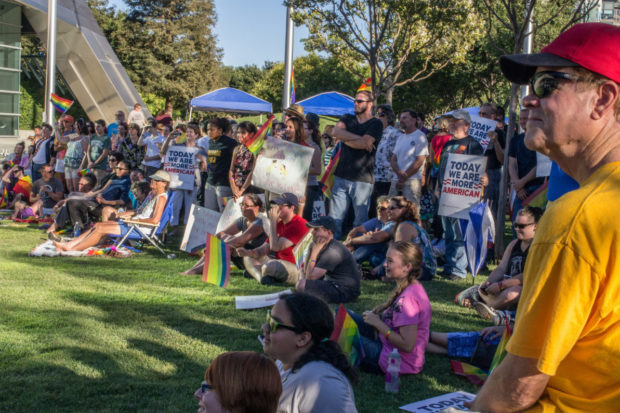
(Editor’s note: The data reflected in this article was current as of June 16. The Registrar of Voters had not certified the election at that time, and votes were still being counted. The outcome of at least two races could have been affected by the additional votes that were counted.)
The most significant aspect of the June 8 Primary Election was the low voter turnout. Despite all the candidate-driven activity on the ground, the millions of dollars in campaign ads (particularly on the Republican side), the deep division over some of the propositions and that deep-seated anger with incumbents we’ve been hearing so much about, turnout was as anemic as we have come to expect in non-presidential election cycles.
The results were a mixed bag for progressives, but it could have been much worse. In Fresno County, the overall voting patterns were somewhat schizophrenic, but there were some small signs of areas that could be exploited for future progressive electoral work.
Propositions
As has come to be the case with the propositions, there was far more disinformation than information about them. Regarding Proposition 14, the open primary initiative, supporters spoke glowingly of how passage would give voters more choice and would result in more moderates getting elected. In addition to the flawed logic that electing moderates is somehow advantageous, the idea that such a system would create more choice is absurd. An open primary increases the likelihood that candidates with big bucks will survive at the expense of more grassroots-oriented candidates, and it reduces rather than extends choice. Many voters will not have any legitimate choices.
This is where Fresno County gets a little schizo. Only two counties voted against Prop 14, San Francisco and Orange (the “moderate” supporters had a field day with that left vs. right dichotomy). But in Fresno County, it passed by the slim margin of 50.8% to 49.2% (a difference of fewer than 600 votes).
Also disappointing was the defeat of Proposition 15, the California Fair Elections Act, which would have provided a public financing test case for the election of the Secretary of State. Here, Fresno County was much more aggressively opposed to this measure (defeating it 67% to 33%) than the state as a whole. Although an imperfect initiative, Prop 15 would nevertheless have been a positive first step toward getting corporate money out of politics.
The Fresno County vote was also curious on Propositions 16 and 17. Both of these corporate-driven initiatives were defeated by an identical 52% to 48% margin at the state level. The Fresno County vote in opposition to Prop 17, the auto insurance measure, was roughly the same as the state. But on Prop 16, the PG&E profit-protection measure, Fresno County voters opposed it 61% to 39%. Clearly, the overall sentiment was not anti-corporate but it was certainly anti-PG&E.
Statewide
At the state level, the big story was the money being spent by the Republican candidates for governor and the U.S. Senate. The winning candidates (and biggest spenders) were Meg Whitman and Carly Fiorina, respectively. Both ran as far to the right as they could. In fact, Jerry Brown’s campaign should pay to run Whitman’s primary ad during the general election. Her positions were so distasteful that she will have a hard time attracting mainstream California voters.
Congress
In three of the four Congressional districts that cross into Fresno County, the incumbents will be heading into November with light competition. Only Democratic Rep. Jim Costa had a primary opponent. Steve Haze had contested Costa from the left, but his campaign fizzled after Costa voted for the Congressional healthcare plan. In District 19, which is the seat being vacated by Republican Rep. George Radanovich, Les Marsden lost the Democratic primary to Lorraine Goodwin in the biggest surprise of the election. Marsden had been widely visible throughout the district for a year and a half, and his opponent was a virtual unknown. Perhaps Goodwin’s ballot affiliation (“Attorney/Physician”) garnered her support.
The Congressional District 19 race is an excellent example of what will be the problem with an open primary system. Had this race been an open primary, the top two vote-getters would both have been right-wing Republicans. So your “choice” in November would have been between “I’m the Conservative Candidate” and “No, I’m Really the More Conservative Candidate.” That’s what we have to look forward to.
State Legislature
The key race here was Assembly District 30, where Fran Florez faced off against Pete Parra in the Democratic primary for an open seat. Florez won and will face Republican David Valadao in November. Henry T. Perea easily won the Democratic primary in District 31 and will face Republican Brandon Shoemaker in November. Democrat Michael Rubio is vying for the Senate seat being vacated by Dean Florez, and he will face Republican Tim Thiesen in November.
County
There were key three races at the county level. In the race for Assessor/Recorder, Carole Laval, who was endorsed by the Central Valley Progressive PAC (CVP PAC), made it into a November runoff against perennial candidate Paul Dictos. In the sole judicial race that was contested, incumbent Judge Jim Petrucelli staved off a challenge from Gary Shinaver of the Public Defender’s Office.
In the all-important Board of Supervisors race in District 1, Cynthia Sterling, who was endorsed by almost all of the local progressive groups, appeared to be in a runoff against incumbent Phil Larson as of press time. The District 1 race is a key because winning one seat on the Board of Supervisors could shift the balance of power on that body.
City
The low turnout was most apparent in the City Council district races. Of the four districts on the ballot this year, the voter registration ranges from 24,500 to about 31,000 yet only about 20% appear to have actually voted. That means a City Council race can be won with a relatively small number of votes.
In those City Council races, the expected winners, incumbent Blong Xiong in District 1 and reporter-turned-politician Clint Olivier in District 7 each won easily. There were only two candidates in each of those races.
Oddly, in Districts 3 and 5, where each race was contested by eight candidates, the overall turnout in each of those respective districts was actually less than it was in Districts 1 or 7. So in precincts where candidates were going door to door and phone banking aggressively, residents still could not be motivated to vote.
In District 3, only 1,800 votes would have won that race. But with so many candidates, no one got anywhere close to that number. There will be a runoff between Mike Briggs, the leading vote getter and a Republican, and Oliver Baines, a Democrat who was endorsed by the CVP PAC.
In District 5, the leading vote getter was former City Council representative Sal Quintero, but he will be in a runoff. At press time, it appeared likely that his opponent would be Louise Bauer Davoli, who was also endorsed by the CVP PAC. Indeed, Mike Rhodes called her the most progressive candidate running for City Council this year. With votes still to be counted, her entry into the runoff was not certain at press time.
Also at the city level was the vote on Measure A, which was an initiative supported by Mayor Ashley Swearingen to raise the population threshold for adding members to the City Council. The measure won, which was a significant blow to progressives. Two new seats on the City Council would likely have been triggered in the next couple of years under the current system, and the population growth trends in the city would almost certainly have resulted in new districts with the opportunity for more progressive representation. Instead, the existing power structure has cemented its control of the City Council for years to come.

